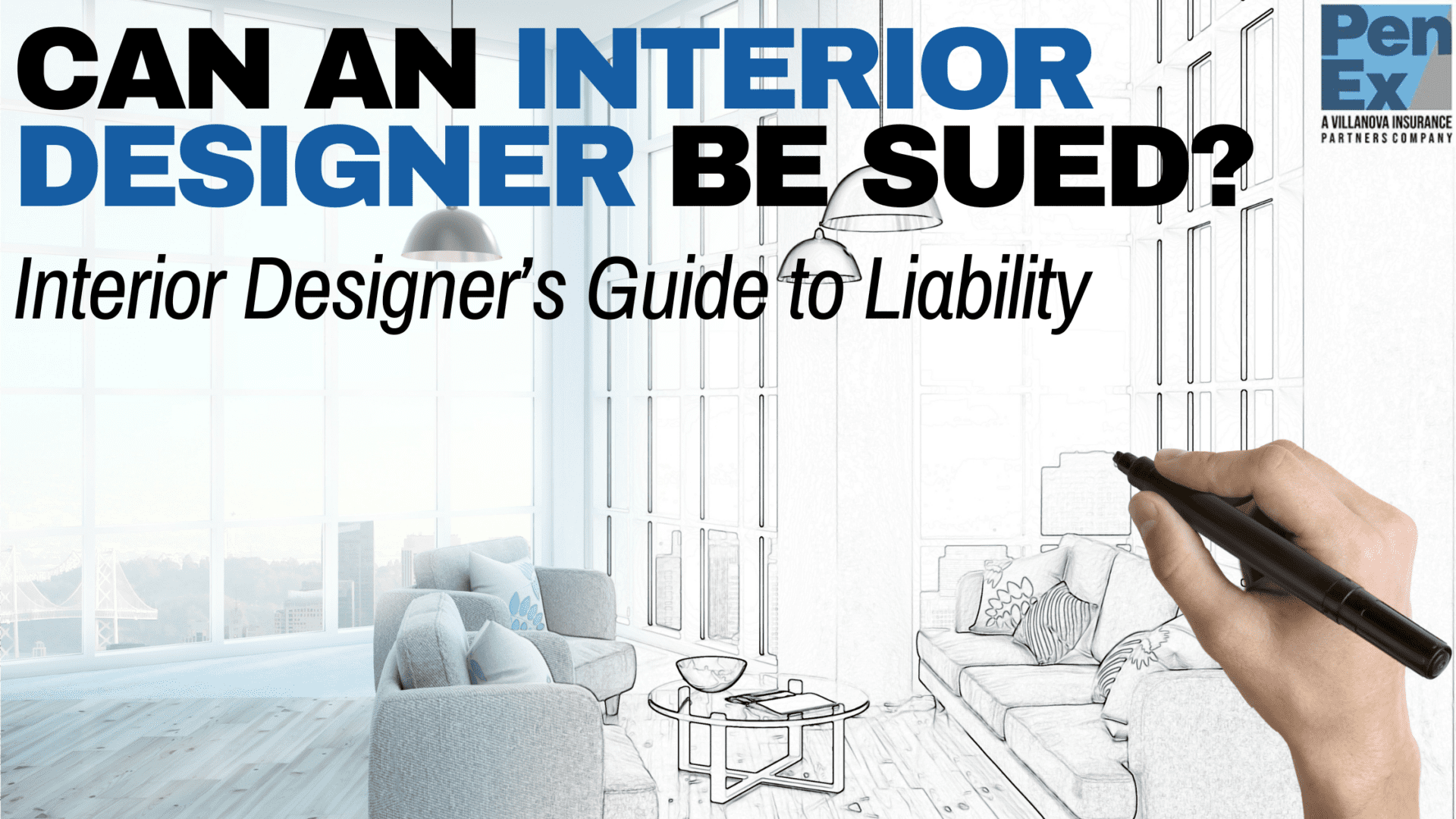Yes, an interior designer can be sued for a variety of reasons. Interior Designers faces many challenges from keeping clients satisfied to managing potential risks. Injury, damage to property, or accidental negligence can become expensive in terms of time and money to remedy an incident or accident. Interior Designers can fall victim to liabilities just like any other line of work and should always be protected by interior designer insurance. While we hope you never end up in a bad situation, insurance for interior designers provides peace of mind and the tools for developing a solid plan so that you nor your company end up in a predicament you’re not prepared for.
The Top Claims Against Interior Designers
While interior designers can be blamed for a multitude of customer dissatisfaction, insurance for interior designer can protect from the costly legal liabilities. Below we describe some of the most common claims clients have against their interior designers.
- Changes Made Without Client Approval: It is imperative that a designer keep their customers abreast of the smallest of changes to the agreed-upon plans. Changes made to design themes or décor colors without informing the homeowner can lead to legal issues, making interior design insurance a necessity instead of a luxury.
- Failure to Adhere to the Timeline in the Contract: The most common problem clients have with their interior designer is with scheduling. Since many clients have a strict timeline and depend on the job getting done by a specific time, they have a very narrow window to change the schedule. When product availability, delivery or shipping timelines get unexpectedly disrupted, the client can hold their interior designer responsible for a breach in contract whether they have interior design insurance or not.
- Use of Different Materials: While the unexpected can force changes to the original and agreed upon plans to be modified, it’s always necessary to come to an agreement with the customer on what new materials will be used instead. Changes made to material colors, and how they’re used or designed without informing the homeowner can lead to costly legal ramifications.
- Injury on the Job: Just like any occupation or activity, coworkers, customers, and contractors can get injured on the job. Even while following proper safety measures, accidents can happen anywhere. The best way to protect everyone after you’ve taken all necessary safety precautions is to get interior designer insurance.
- Damage or Theft of Property: Assuming no one has left the doors unlocked at the end of the day, damage and theft of the property can unfortunately still occur while the interior design is in progress. Whether faulty locks or forgetfulness, the interior designer will be held liable for damages, repairs, and replacements.
How Do Interior Designers Minimize Liability Exposure?
Leveraging Legal Expertise
In addition to using well-written contracts to prevent misunderstandings, interior designers can further safeguard themselves by leveraging legal expertise. A skilled lawyer can serve as a valuable ally, aiding designers not only in minimizing liability exposure but also in maximizing earnings. Collaborating with a personal attorney to review these templates against local laws, particularly in the state or location of the client or project, can provide an added layer of protection and ensure compliance with relevant regulations.
Protecting Yourself With Insurance
Errors and Omissions insurance, alternatively referred to as professional liability insurance or malpractice insurance, protects designers from bearing the entire burden of defending themselves, encompassing judgments, settlements, and claims costs. E&O insurance coverage extends to the interior designer’s defense expenses, even in instances of frivolous lawsuits.
Documentation Practices For Interior Designers
An interior designer’s specifications serve as legally binding contract documents. Therefore, many specification systems offer the capability for designers to store a template for each specification to encompass all necessary details.
In addition, the designer should meticulously document:
- Decisions made during meetings or in discussions with the client, contractor, or other involved parties.
- Communication exchanges, including those with vendors and contractors.
- Observations during construction throughout the project, particularly regarding production or construction safety issues.
- Changes and revisions made to the original specifications, along with the reasons for these alterations.
- Approvals or sign-offs obtained from clients, contractors, or other relevant parties regarding the specifications.
- Deviations from the specifications during the construction phase, including the reasons for these deviations and any corresponding adjustments made.
- Inspection records or quality assurance measures conducted during the project to ensure compliance with specifications and regulatory requirements.
- Correspondence related to permits, licenses, or regulatory approvals necessary for the project.
- Disputes or conflicts that arise during the project and the resolutions implemented to address them.
What Insurance do Interior Designers Need to Protect Against Common Claims?
Protecting yourself and your livelihood from these common claims with interior design insurance is crucial for the success of your business. While you should discuss which policies are best suited for your specific needs with a qualified PenEx interior designer insurance representative, below are some policies to consider.
- General Liability covers many common claims you will face including injury or property damage but could overlook some unconventional issues that may arise.
- Business Personal Property will protect your inventory, computers, and office furniture at your place of business or onsite.
- Business Auto insurance policy will cover liabilities involving company vehicles and potentially personal vehicles under specific circumstances.
- Professional Liability and 3rd-party Crime policies cover legal defense costs, judgements, and settlements from errors and omissions and professional misconduct.
- Workers Compensation will cover all wages for employees and long-term subcontractors on the payroll and their medical costs if they are injured on the job.
With all that you’ve accomplished to achieve your well-earned title, don’t take the chance of losing everything to a lawsuit. Protect your clients and yourself with interior designer insurance through PenEx by entering your information in our online form or Call us at (484) 560-6661. Get your free quote today and see just how affordable and customized our top-of-line policies are for you!
Get Covered in Less Than 48 Hours


